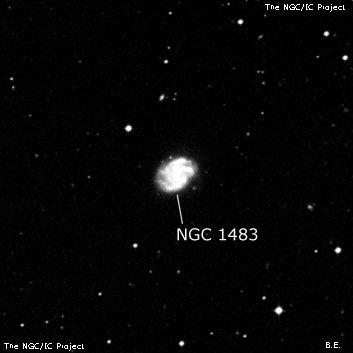
John Herschel discovered NGC 1483 = h2595 on 14 Dec 1835 (and possibly earlier by Dunlop) and recorded "pretty faint; round; very little brighter in the middle; 20". (Newly polished mirror, but the sky dull and haze forming; so that this may very possibly be Dunlop 428.)". His second observation reads "very faint; pretty large; round; very gradually a little brighter in the middle; 80" across. I feel convinced that this nebula is too faint to have been seen by Mr Dunlop. Put on the 9 inch aperture, could not discern the least trace of it. Mirror polished yesterday and in high beauty. Sky superb."
James Dunlop discovered D 427 on 2 Sep 1826 with his 9" reflector from Parramatta and reported "a pretty large nebula, round figure, 2' or 3' diameter". D 428 was described as "An extremely faint ill-defined small nebula. A pretty large nebula (D 427) precedes this." Despite Herschel's comments, Dunlop's position for D 428 lands very close to NGC 1483, although there is only a single object here, so perhaps this is a coincidence.
600/800mm - 24" (11/18/12 - Magellan Observatory, Australia): moderately bright and large, slightly elongated NW-SE, 1.2'x0.9', broad concentration, slightly irregular or patchy surface brightness but no clear spiral structure. Located 15' SE of mag 6.7 HD 24500. Member of the Dorado Group.
Notes by Steve Gottlieb